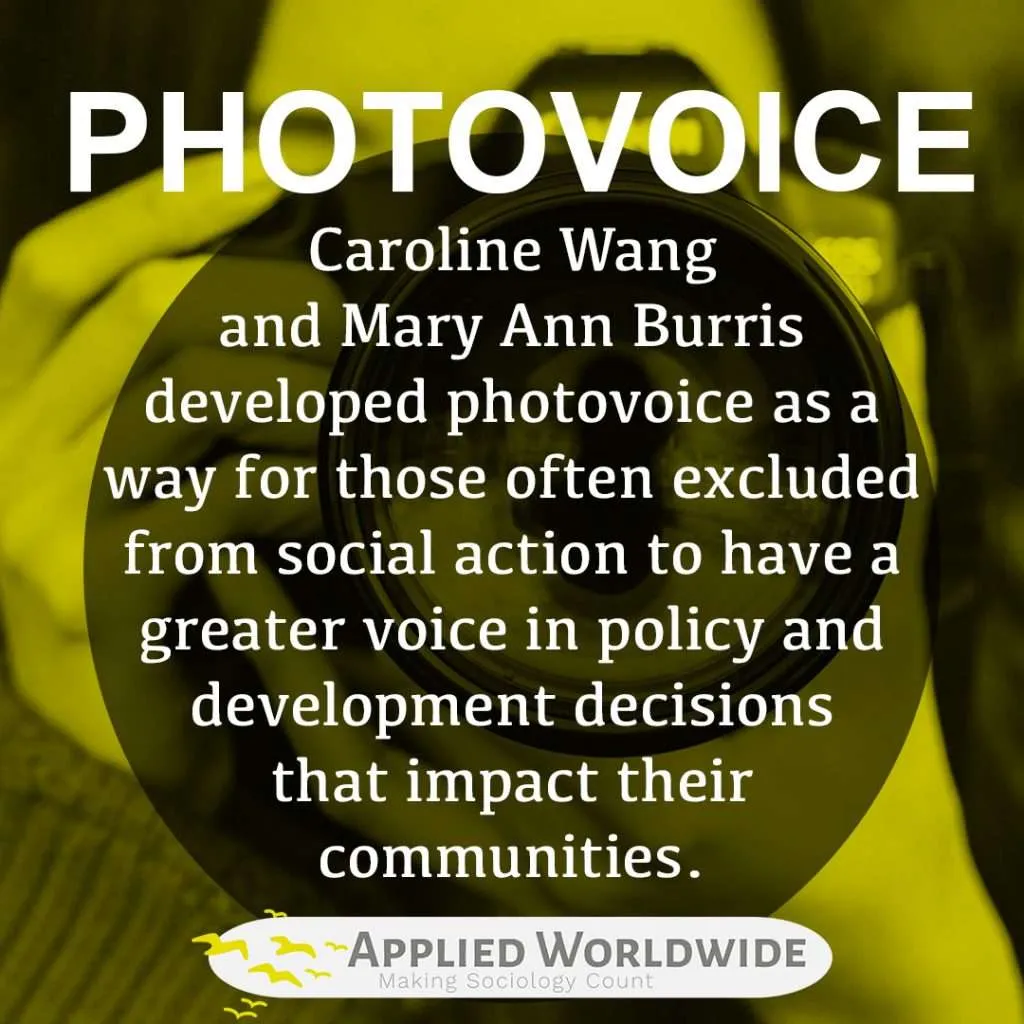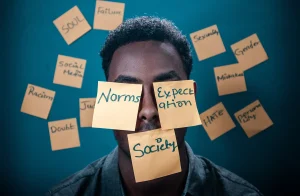Welcome to our guide on the participatory research method, photovoice. Continue reading for our analysis on how photovoice can be used in community development, or click to the section you would like to read in our table of contents!
- What Community Vitality in Community Development?
- Using Photovoice to Inform Projects in Community Vitality
- Concluding Thoughts on Photovoice
- Frequently Asked Questions about Photovoice
- What is Photovoice?
- How does Photovoice work as a research method?
- What are the primary goals of Photovoice projects?
- Who typically participates in Photovoice projects?
- How are the photographs used in Photovoice analyzed?
- What role does storytelling play in Photovoice projects?
- Can Photovoice be used for advocacy or social change?
- Are there ethical considerations in conducting Photovoice projects?
What Community Vitality in Community Development?
As people continue to migrate away from rural America to urban areas, scholars and policy-makers alike, continue to confront the question of how to maintain “community vitality.” News media, non-profit organizations, community-based researchers, and those in community development have all demonstrated interest in this concern, but as I have witnessed in my own work, local governments also have a strong interest in the vitality of their neighborhoods. Photovoice can be an effective research method for community building and community vitality.

Neighborhood Vitality
The reason for interest in “neighborhood vitality” during periods of urbanization is the popular belief that as cities grow, neighborhoods experience “decay.” That so-called decay is characterized by symptoms such as poverty, unemployment, homelessness, violent crime, racial segregation, or high infant mortality rates.
Municipal governments across the country have begun to experiment with different plans to build community and reduce their risk of urban decay. You can check out the Southeastern San Diego Community Plan as an example, but cities have used a wide variety of plans and programs to address the needs of their neighborhoods.
The general concern for neighborhood vitality has led researchers to work toward the best solutions. For instance, the nonprofit Center for Community Progress established strategic approaches for building strong neighborhoods. Those approaches include:
- Building up the value of amenities such as parks and greenspaces,
- Providing desirable housing, and
- Creating neighborhood stability.
The Center for Community Progress also offers a conference and other assorted materials for maintaining or improving neighborhoods.
Overall, though the point remains, a demand exists for information about building community within neighborhoods.
Using Photovoice to Inform Projects in Community Vitality
As applied sociologists, we understand there is no single answer that can be used by all cities across this diverse nation and world. Communities will likely have different priorities when it comes to the meaning of “vitality.” For instance, a neighborhood with food security concerns will require a different approach than a neighborhood looking for more appealing art displays. These differences are why as we continue to address the needs of our seemingly ever-growing cities. We must remain diligent in hearing the needs of residents prior to implementing programs designed to improve “vitality.”
Urban sociologists and urban planners have used methods such as quality of life surveys, but one of my favorite methods for collecting information from community members is photovoice. In 1992, Caroline Wang and Mary Ann Burris developed photovoice as a research methodology with an understanding that “people can identify, represent, and enhance their community,” through photography.
Additionally, photovoice was created as a way for those often excluded from social action to have a greater voice in policy and development decisions that impact their communities. In other words, photovoice was created to give voice to those with little decision-making power.
Expressing Lived Experience through Photography
The process of photovoice involves allowing members of a community to photograph the most significant aspects of their lived experiences and share those images with an audience of decision-makers with direct influence over the community.
The website photovoice.org displays a variety of projects using photovoice. As an example, a large-scale photovoice project was implemented in London to allow residents a voice in the development of a public transportation system. In this London case, the government had already initiated the transportation development and the photovoice project was organized by a third party, but when the images were presented to those in charge of the transportation project, decision makers decided to reconceptualize the system to fit the needs of residents.
Overall, this visual form of research is a practical method for any governing body to receive feedback from the populations they impact.
Photovoice and Community Development
The University of Kansas has created a collaborative project known as the Community Tool Box that allows practitioners such as city planners and community organizers to publish resources for other practitioners. In an entry contributed by Phil Rabinowitz titled “Implementing Photovoice in your Community,” the author outlines three goals of photovoice in greater detail:
- To help those who are often unheard gain a voice, enabling them to record and reflect on their experiences and their communities’ conditions, both positive and negative.
- To bring about change that will improve conditions and enhance lives by reaching and influencing policy-makers.
- To encourage critical consciousness. Through choosing, discussing, and reflecting on the subjects of their photographs, the photographers can come to a clearer understanding of their circumstances and the economic, social, psychological, and political forces that shape them.
As sociologists, we could likely point to many existing vitality projects and suggest areas in which the program is failing to serve the needs of all those in the community. As stated above, photovoice is designed to explicitly hear from those who have a history of systematic underrepresentation. These photography-based projects can be used as a form of assessment to assist the city planners and others in evaluating the health of its neighborhoods and proposing solutions that work for the members of the community.
Reaching Policy Makers
The second goal of photovoice is for members of a community to reach policy makers. It is important that decision-makers hear from the city’s residents prior to implementing vitality projects that impact the lives of community members so that resources are not spent reconceptualizing projects once they have begun to be implemented, such as the case in London. Photovoice can provide an effective and efficient method for collecting information about neighborhoods and promoting civic engagement.
The final goal of these projects is to empower community members to see their environment from a perspective of critical consciousness. The idea is to turn neighborhoods into destinations rather than spaces that people occupy, by helping people to see underlying economic, social, and political forces that have shaped their neighborhoods, in an attempt to build a sense of place amongst residents.
Concluding Thoughts on Photovoice

Sociologists research a wide variety of topics and social problems, but as applied sociologists we must learn to collect and use data in a way that contributes to the well-being of society. When it comes to urbanization and the resulting policy decisions, we should be mindful of assisting those with power in a way that represents the needs of those with voices that may otherwise go unheard in the rapidly changing social landscape of urban areas. Photovoice is one way in which we, as sociologists, can use our skills to impact positive social change.
Urbanization in Nigeria: A Sociological Analysis
Frequently Asked Questions about Photovoice
What is Photovoice?
Photovoice is a participatory research method that combines photography and grassroots social action. It allows individuals, often from marginalized communities, to capture and share their lived experiences through photographs.
How does Photovoice work as a research method?
Participants are provided with cameras to take photographs that represent their perspectives and experiences. These photos are then used in group discussions, enabling participants to tell their stories and advocate for social change.
What are the primary goals of Photovoice projects?
The primary goals of these projects include empowering participants to express their experiences visually, raising awareness about specific issues, facilitating dialogue and community engagement, and influencing social policies or practices.
Who typically participates in Photovoice projects?
Participants in Photovoice projects are often individuals from communities facing social challenges or inequalities. This can include marginalized groups, minorities, or those with limited access to traditional forms of communication.
How are the photographs used in Photovoice analyzed?
The photographs taken by participants are analyzed collectively in group discussions. Participants share the stories behind their images, and researchers may identify recurring themes, patterns, or issues that emerge from the visual narratives.
What role does storytelling play in Photovoice projects?
Storytelling is a crucial. Participants not only capture images but also narrate the stories behind them, providing context and personal insights. This storytelling aspect helps convey the meaning and significance of the visuals.
Can Photovoice be used for advocacy or social change?
Yes, Photovoice is often used as a tool for advocacy and social change. The narratives and images generated in Photovoice projects can be shared with policymakers, community leaders, and the public to influence perceptions and promote action.
Are there ethical considerations in conducting Photovoice projects?
Yes, ethical considerations include obtaining informed consent from participants, ensuring their anonymity or confidentiality if desired, and being mindful of the potential impact of the project on the participants and the community.







